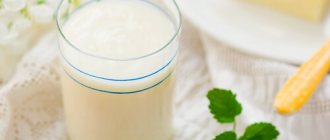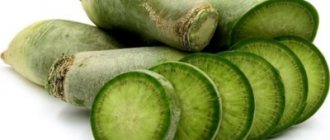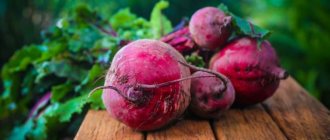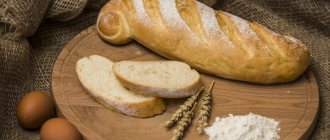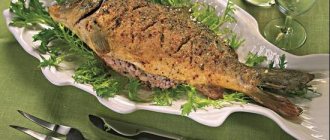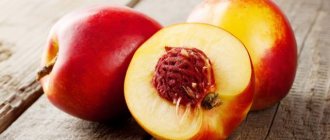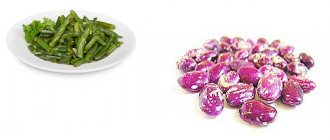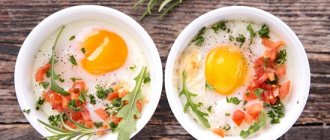Properties of kozinaki
How much does kozinaki cost (average price for 1 kg)?
Moscow and Moscow region.
150 rub.
Kozinaki is a national sweet dish of Georgian cuisine, which has long gained love and popularity not only in its homeland, but also far beyond its borders. Kozinaki is an ancient type of oriental sweets. To this day, in the eastern countries, the sweet nut delicacy is prepared according to ancient recipes. Kozinaki is considered a must-have dessert at a Georgian New Year's feast.
Composition of kozinaki
The classic composition of kozinak contains only two main ingredients - honey and walnuts. Much later, sweets began to be produced with the addition of sugar. Over the many years of history, the production process of kozinaki has remained virtually unchanged. The honey included in kozinak is melted until a thick sweet mass is formed and pre-roasted and finely chopped walnuts are added. The result is a honey-nut mass, which is cut into diamonds, called kozinaki.
Currently, kozinaki is produced not only using walnuts. Modern kozinaki is a confectionery product based on sugar syrup and sunflower seeds, sesame seeds or a mixture thereof. There is a product based on hazelnuts and pine nuts, as well as kozinaki with pistachios, dried fruits, and chocolate. The calorie content of kozinaki is at a fairly high level and amounts to 530 Kcal per 100 grams of sweetness. However, this indicator corresponds to the calorie content of kozinaki, which is produced with sugar syrup.
Application for weight loss
Due to a number of beneficial properties of kozinaki, even doctors recommend their use to prevent diseases or combat existing ones.
For diabetes
People with diabetes are contraindicated from consuming store-bought sweets, since most manufacturers use a cheaper alternative to honey - sugar syrup.
True, today on the shelves of many supermarkets you can find kozinaki with sugar substitutes, specially intended for diabetics. But even their benefits are questionable, and before purchasing it is better to consult an endocrinologist.
For pancreatitis
Pancreatitis requires serious dietary restrictions, including sweets. In addition, seeds and nuts are too heavy for the pancreas. Therefore, experts do not recommend eating kozinaki for this disease.
And only in case of remission, with the permission of the doctor, you can eat no more than 30 g of the product at a time.
For gastritis
Nutritionists advise giving up treats, as hard and rough foods can injure the inflamed walls of the stomach. In addition, gozinaki contains too many sugars and fats.
The exception is the period of stable remission. However, it is not recommended to abuse the product and consume it on an empty stomach (this applies not only to people suffering from gastritis).
For constipation
Sesame kozinaki is an optimal product for combating constipation, since sesame has a mild laxative effect. Similar properties are inherent in walnuts and dried fruits.
Kozinaki is often used when following a diet, since the chemical composition of the product does not contain animal proteins. And even though this delicacy is high in calories, it can saturate the body and provide it with energy.
Ideally, it is recommended to choose gozinaki based on sesame or dried fruits. They are less harmful to the figure and will be an excellent replacement for other sweets that are dangerous for skinny people.
The optimal daily dose during weight loss is 30–40 g.
Kozinaki can normalize the functioning of the gastrointestinal tract and improve the condition of the liver. They are used to prevent the appearance of parasites in the intestines, as well as worms in children. Honey in their composition helps strengthen the immune system, helps relieve muscle fatigue and has a therapeutic effect against periodontal disease.
Although kozinaki have many positive properties, there is still a category of people who are prohibited from consuming this delicacy. We are talking about patients with diabetes, since most often, instead of honey, sugar and syrup based on it are used in the cooking process. The exception is dietary varieties of the product made using honey, as well as dried fruits, nuts or seeds.
For pancreatitis
Pancreatitis involves following a strict diet and avoiding various tasty foods. First of all, you need to stop eating fatty foods. This restriction also applies to some types of sweets. Sunflower seeds, and therefore kozinaki, are the subject of controversy among most nutritionists.
Read more: Vitamin A: benefits for the body of men and women, optimal dosage for adults and children
Still, most of them are inclined to ban this delicacy. In case of exacerbation, a particularly strict diet is observed. But even during remission, kozinaki should not be consumed. Even a small piece of such a dish can cause stomach pain, cause nausea and vomiting, and even cause diarrhea.
Kozinaki for pancreatitis is dangerous for some reasons. Nuts and seeds used for sweets are prohibited because they stimulate the pancreas, which can lead to relapse of inflammation of the gland. The binder in the form of sugar syrup is difficult to digest, hence it requires excess synthesis of pancreatic juice and enzymes. This also puts stress on the inflamed organ of the digestive tract.
Almost all ingredients of kozinak (honey, nuts and seeds) are strong allergens. Against the background of inflammation of the pancreas, a person may experience a reaction unusual for his body. Even if there was no previous allergy to the components of kozinak, with this disease it may appear.
Most unscrupulous manufacturers use various additives to make kozinak in the form of flavorings, flavor enhancers, dyes, all of which negatively affect the digestive tract, in particular the pancreas.
Only with stable remission, with the permission of a doctor, you can eat no more than 30 g of dessert. If there are no negative consequences, after a while you can enjoy it again in the same quantity.
For gastritis
To understand whether it is possible to consume kozinaki if gastritis is detected, you need to remember that the basis of this product is most often sunflower seeds. However, even when using other ingredients, nutritionists do not recommend including the dish in the diet, since eating hard and rough foods can injure the inflamed walls of the stomach. You should also remember that kozinaki contains a lot of fat and sugar. From this it follows that patients with gastritis are prohibited from consuming this product.
During an exacerbation of the disease, you should absolutely not eat kozinaki; as for the period of remission, not everything is so simple. If there is a period of stable remission, and the disease does not make itself felt for a long time, you can eat a small amount of this product. It is important not to abuse it. Otherwise, such a dessert will cause stomach pain and cause heartburn, leading to an exacerbation of gastritis.
It is forbidden to eat kozinaki on an empty stomach. Moreover, you should not eat them not only in case of gastritis, but also in the absence of such pathologies.
Kozinaki has beneficial properties, but there are also negative aspects. The product contains various vitamins and amino acids. But at the same time, the dish is high in fat, which negatively affects the condition of the human body. It must be remembered that even the usual consumption of a large number of seeds provokes problems with the liver, kidneys, and also leads to weight gain. Therefore, if you have health problems, you should consult a specialist.
For constipation
Kozinaki can be consumed if constipation occurs. Sesame in this delicacy has a mild laxative effect. Walnuts also have a number of benefits, one of which is stimulating the functions of the gastrointestinal tract. Nutrients in nuts help combat chronic constipation. Dried fruits in kozinaki also contribute to excellent cleansing of the intestines from toxins.
In cooking
Kozinaki is not used for preparing other dishes. The product itself can be bought in a store or made independently.
Its manufacturing technology involves the following steps:
- nuts are crushed and mixed with seeds;
- the mixture is poured with warm honey;
- the product is dried until it hardens.
You can dry sweets in the oven or in the sun. Please note that heat treatment reduces the beneficial properties of honey.
No processing is needed before use. You can cut the resulting bar into pieces to reduce the strain on your teeth.
For weight loss
The product is quite high in calories, so logically, anyone who wants to lose weight is advised to exclude it from their diet.
Everyone periodically craves something sweet, and then it’s better to eat kozinaki (in reasonable quantities, of course) than half a cake or a chocolate bar. Both nuts and honey contribute to the process of losing weight and cleansing the body.
It is recommended to use a self-prepared bar that contains no sugar or harmful preservatives.
There is also a four-day diet, when during the day you can only nibble on homemade kozinaki and wash it down with water. A few days of this regimen will help you lose a couple of extra pounds.
When preparing kozinaki, add dried fruits and ginger, which are useful for those who want to keep fit.
Kozinaki is a tasty and healthy sweet. When consumed in moderation, it will not harm your figure or health, but will saturate the body with valuable elements, especially if you learn to cook them yourself.
Harm of kozinak
Currently, there is more and more talk about the dangers of kozinaki for the health of the human body. Although just a few decades ago the benefits of kozinaki were obvious. A product based on natural and healthy ingredients (honey and nuts) could not harm human health. Modern kozinaki can quickly help you gain a couple of extra pounds, as well as problems with your teeth.
Therefore, the product is not recommended to be consumed in large quantities. It is better to purchase a dietary type of kozinak based on fructose and oatmeal. You can make sweets at home. There will be no harm from the kozinaki that you prepare at home. Rather, the product will saturate your body with beneficial vitamins and minerals, which are found in natural bee honey and walnuts.
In order to prepare kozinaki at home, you will need half a kilogram of honey and peeled walnut kernels. To make the final product even sweeter, you can add no more than 2 teaspoons of sugar. The nuts should be finely chopped and fried in a small amount of oil. Pour honey into a saucepan and place over medium heat. You need to bring the sweet mass to a boil, constantly stirring the honey.
After the honey has boiled, you need to cool the mass and do the same steps 2 more times. The result is a thick syrup, into which you need to add the roasted nuts and, stirring constantly, bring the honey to a boil. At the last stage, the nut mass is laid out on a board moistened with water and rolled out with a rolling pin. The still warm honey layer is cut into even pieces. Healthy homemade kozinaki are ready.
Calorie content Kazinak sunflower. Chemical composition and nutritional value.
Sunflower casinak
is rich in such vitamins and minerals as: vitamin B2 - 13.7%, choline - 11%, vitamin B5 - 140.8%, vitamin B6 - 40.2%, vitamin B9 - 59.3%, vitamin E - 174%, vitamin PP - 35.2%, potassium - 34%, magnesium - 32.3%, phosphorus - 144.4%, iron - 21.1%, manganese - 105.5%, copper - 183%, selenium - 144.2%, zinc - 44.1%
- Vitamin B2
is involved in redox reactions, helps to increase the color sensitivity of the visual analyzer and dark adaptation. Insufficient intake of vitamin B2 is accompanied by impaired condition of the skin, mucous membranes, and impaired light and twilight vision. - Choline
is part of lecithin, plays a role in the synthesis and metabolism of phospholipids in the liver, is a source of free methyl groups, and acts as a lipotropic factor. - Vitamin B5
is involved in protein, fat, carbohydrate metabolism, cholesterol metabolism, the synthesis of a number of hormones, hemoglobin, promotes the absorption of amino acids and sugars in the intestines, and supports the function of the adrenal cortex. A lack of pantothenic acid can lead to damage to the skin and mucous membranes. - Vitamin B6
is involved in maintaining the immune response, processes of inhibition and excitation in the central nervous system, in the transformation of amino acids, the metabolism of tryptophan, lipids and nucleic acids, promotes the normal formation of red blood cells, and maintaining normal levels of homocysteine in the blood. Insufficient intake of vitamin B6 is accompanied by decreased appetite, impaired skin condition, and the development of homocysteinemia and anemia. - Vitamin B9
as a coenzyme is involved in the metabolism of nucleic acids and amino acids. Folate deficiency leads to disruption of the synthesis of nucleic acids and proteins, resulting in inhibition of cell growth and division, especially in rapidly proliferating tissues: bone marrow, intestinal epithelium, etc. Insufficient folate intake during pregnancy is one of the causes of prematurity, malnutrition, and congenital deformities and child development disorders. A strong relationship has been shown between folate and homocysteine levels and the risk of cardiovascular disease. - Vitamin E
has antioxidant properties, is necessary for the functioning of the gonads and heart muscle, and is a universal stabilizer of cell membranes. With vitamin E deficiency, hemolysis of erythrocytes and neurological disorders are observed. - Vitamin PP
is involved in redox reactions of energy metabolism. Insufficient vitamin intake is accompanied by disruption of the normal condition of the skin, gastrointestinal tract and nervous system. - Potassium
is the main intracellular ion that takes part in the regulation of water, acid and electrolyte balance, and is involved in the processes of conducting nerve impulses and regulating blood pressure. - Magnesium
is involved in energy metabolism, the synthesis of proteins, nucleic acids, has a stabilizing effect on membranes, and is necessary to maintain the homeostasis of calcium, potassium and sodium. A lack of magnesium leads to hypomagnesemia, an increased risk of developing hypertension and heart disease. - Phosphorus
takes part in many physiological processes, including energy metabolism, regulates acid-base balance, is part of phospholipids, nucleotides and nucleic acids, and is necessary for the mineralization of bones and teeth. Deficiency leads to anorexia, anemia, and rickets. - Iron
is part of proteins with various functions, including enzymes. Participates in the transport of electrons and oxygen, ensures the occurrence of redox reactions and activation of peroxidation. Insufficient consumption leads to hypochromic anemia, myoglobin deficiency atony of skeletal muscles, increased fatigue, myocardiopathy, and atrophic gastritis. - Manganese
is involved in the formation of bone and connective tissue, and is part of enzymes involved in the metabolism of amino acids, carbohydrates, and catecholamines; necessary for the synthesis of cholesterol and nucleotides. Insufficient consumption is accompanied by slower growth, disturbances in the reproductive system, increased fragility of bone tissue, and disturbances in carbohydrate and lipid metabolism. - Copper
is part of enzymes that have redox activity and are involved in the metabolism of iron, stimulates the absorption of proteins and carbohydrates. Participates in the processes of providing oxygen to the tissues of the human body. Deficiency is manifested by disturbances in the formation of the cardiovascular system and skeleton, and the development of connective tissue dysplasia. - Selenium
is an essential element of the antioxidant defense system of the human body, has an immunomodulatory effect, and is involved in the regulation of the action of thyroid hormones. Deficiency leads to Kashin-Beck disease (osteoarthritis with multiple deformities of the joints, spine and limbs), Keshan disease (endemic myocardiopathy), and hereditary thrombasthenia. - Zinc
is part of more than 300 enzymes and is involved in the processes of synthesis and breakdown of carbohydrates, proteins, fats, nucleic acids and in the regulation of the expression of a number of genes. Insufficient consumption leads to anemia, secondary immunodeficiency, liver cirrhosis, sexual dysfunction, and the presence of fetal malformations. Research in recent years has revealed the ability of high doses of zinc to disrupt the absorption of copper and thereby contribute to the development of anemia.
morehide
You can view a complete directory of the healthiest foods in the “My Healthy Diet” app.

